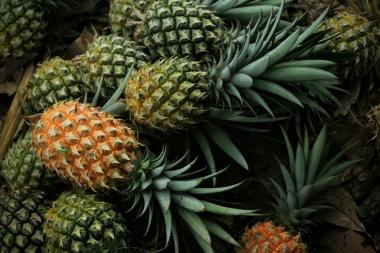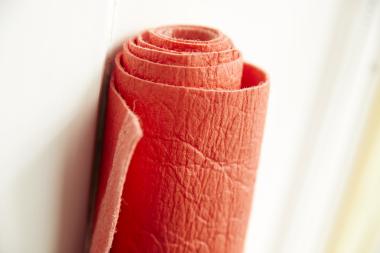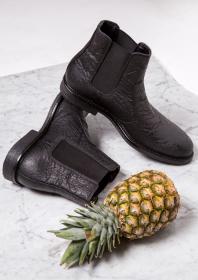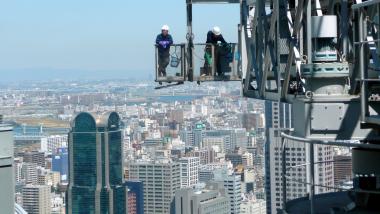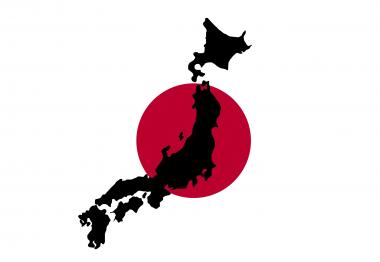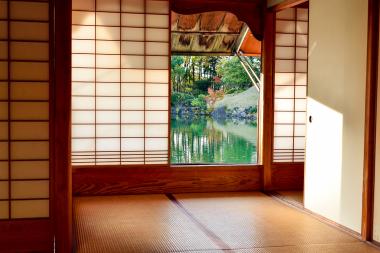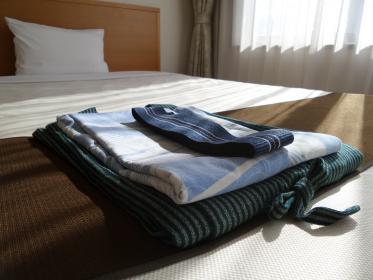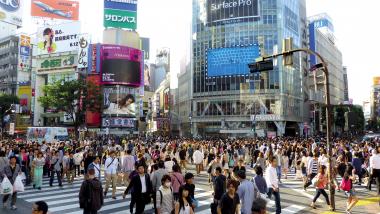Turning Pineapple Leaves - a sustainable Alternative to Leather
- Spanish entrepreneur Carmen Hijosa is nominated for European Patent Office (EPO) prize European Inventor Award 2021 for her sustainable alternative to leather
- Development of a process for turning pineapple leaves into a soft, durable and versatile natural material
- Environmentally-friendly alternative supports local farming communities and is sought after by major international fashion brands
The European Patent Office (EPO) announces that Spanish entrepreneur Carmen Hijosa has been nominated in the "SMEs" category of the European Inventor Award 2021 for developing a leather alternative made from pineapple leaf fibres. Her innovative textile uses a waste resource and can be produced with less impact on the environment compared with making cow leather. Hijosa has been commercialising her invention through her London-based SME since 2013, and today her natural leather alternative supports farming communities and cooperatives in the Philippines and is sought after by major international fashion brands.
The winners of the 2021 edition of the EPO's annual innovation prize will be announced at a ceremony starting at 19:00 CEST on 17 June which has this year been reimagined as a digital event for a global audience.
Inventing a natural textile from waste pineapple leaf fibre
Conventional leather production is controversial, given the vast resources needed to raise cattle for slaughter, the risk of pollution posed by the chemical-heavy tanning process, and the often dire working conditions in tanneries. Hijosa experienced the reality of global leather production first-hand while working as a World Bank textile design consultant in the Philippines in 1993.
Moved by the negative environmental and social impacts of the local leather production process, she decided to develop a sustainable textile that was suitable for export and made better use of Filipino skills and raw materials. “Pineapple leaf fibres are very strong, fine and flexible, and have been used in the Philippines for 300 years in traditionally hand-woven textiles,” explains Hijosa. “I began to think: ‘What if I make a mesh with these pineapple leaf fibres, which is not unlike leather – a mesh of fibres?’.”
She set out to replicate leather’s mesh of collagen fibres, diving into a 12-year research and development process that involved completing several textile degrees, setting up a company and refinancing her house to keep researching and complete her PhD, before successfully creating the textile called Piñatex and perfecting its production. This involves stripping the cellulose fibres from leaves and first manufacturing textile grade fibres. These are then processed into a non-woven mesh textile, which is further enhanced and softened into a leather alternative.
The raw material that forms the base of Hijosa’s textile is a by-product of pineapple harvesting in the Philippines, offering an additional income to farmers and using an otherwise discarded resource. This waste source is significant with the world’s top ten pineapple producing countries creating enough leaves to potentially replace more than 50% of the world’s leather output with Hijosa’s material. Piñatex also requires much less water than textiles such as cotton, which consumes over 20 000 litres of water per kilogram. What is more, it is produced using fewer chemicals and less CO2 compared with leather production, further enhancing the sustainability credentials of Hijosa’s textile.
Innovation offering consumers more sustainable choices
In 2011, Hijosa filed a patent application for the textile and its production, before founding Ananas Anam as a start-up in 2013 to launch Piñatex commercially. For her, this part of the process was essential: “The IP was a pivotal part for securing funds, securing the product’s future and its market potential.” Today, she remains Chief Creative & Innovation Officer and is at the forefront of new developments in plant-based, waste-based textiles. Her pioneering work has positioned the company as a market leader at a time where consumers are starting to push for more sustainable choices.
Since 2013 the turnover of Hijosa’s company has roughly doubled every year through to 2019 and grown by 40% in 2020. It employs around 10 staff in its London site and works with factories in the Philippines and Spain, as well as the biggest Filipino pineapple-growing collective, which comprises 700 families who benefit from an additional income by supplying waste leaves. Piñatex is currently used by almost 3.000 brands in 80 countries. It can be found in a growing range of products – from trainers to jackets, car interiors, handbags and even in the world’s first all-vegan hotel suite.
A range of other plant-based alternatives to leather exist or are in development – based on anything from apple cores to mushrooms – highlighting the trend towards plant and waste-based textiles. The combined global leather (animal and synthetic) market was valued at EUR 374 billion in 2017, and although real leather is becoming scarce and therefore expensive, the overall market is predicted to grow at a Compound Annual Growth Rate of 5.40% until 2025. Although recent volcanic eruptions near their factories in the Philippines and pandemic-related restrictions have temporarily slowed production, Hijosa says the company’s outlook remains strong as consumers are starting to push for more sustainable choices.
Dr. Carmen Hijosa
… was born in Salas, Asturias, Spain, on 17 March 1952. After moving to Ireland at the age of 19, Hijosa co-founded the luxury leather manufacturing company Chesneau Leather Goods in 1977. There, she also served as director of design and sold to high-end clients such as Harrods. After running the company for 15 years, she began working as a textile consultant for the World Bank, as well as at research institutes in Germany and Ireland on EU-funded projects in the 1990s, bringing her textile design expertise to developing markets. In 1993, the World Bank asked her to consult on the Philippine leather industry. Seeing the industry’s negative environmental and social impact, she was driven to develop a sustainable alternative (a leather replacement derived from pineapple leaves). From 2009 to 2014, Hijosa completed a PhD in textiles at the Royal College of Art in London, further developing her prototype textile. In 2013, she founded the company Ananas Anam Ltd. to commercialise the leather alternative. Carmen Hijosa holds one European patent, EP2576881, granted in 2018.
About the European Inventor Award
The European Inventor Award is one of Europe's most prestigious innovation prizes. Launched by the EPO in 2006, it honours individual inventors and teams of inventors whose pioneering inventions provide answers to some of the biggest challenges of our times. The finalists and winners are selected by an independent jury consisting of international authorities from the fields of business, politics, science, academia and research who examine the proposals for their contribution towards technical progress, social development, economic prosperity and job creation in Europe. The Award is conferred in five categories (Industry, Research, SMEs, Non-EPO countries and Lifetime achievement). In addition, the public selects the winner of the Popular Prize from among the 15 finalists through online voting.
European Patent Office Leather leather alternative cellulose fiber pineapple leaves hotels handbag
European Patent Office


